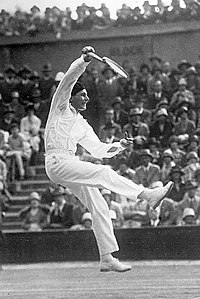
Jean René Lacoste was a French tennis player and businessman. He was nicknamed "the Crocodile" because of how he dealt with his opponents; he is also known worldwide as the creator of the Lacoste tennis shirt, which he introduced in 1929, and eventually founded the brand and its logo in 1933.

Henri Jean Cochet was a French tennis player. He was a world No. 1 ranked player, and a member of the famous "Four Musketeers" from France who dominated tennis in the late 1920s and early 1930s.

Jean Laurent Robert Borotra was a French tennis champion. He was one of the "Four Musketeers" from his country who dominated tennis in the late 1920s and early 1930s. Borotra was imprisoned in Itter Castle during the latter years of World War II and subsequently fought in the Battle for Castle Itter.

Francis "Frank" Townsend Hunter was an American tennis player who won an Olympic gold medal. He won the U.S. National Indoor Championships in 1922 and 1930 and the Eastern Clay Court Championships in 1919.
Henri Cochet defeated the defending champion Jean Borotra in the final, 4–6, 4–6, 6–3, 6–4, 7–5 to win the gentlemen's singles tennis title at the 1927 Wimbledon Championships. Cochet became the first player to win three consecutive Grand Slam tournament matches from two sets down, an achievement that went ummatched until Tommy Robredo did so at the 2013 French Open.
The 1925 French Championships was a tennis tournament that took place on the outdoor clay courts at the Stade Français in Saint-Cloud, France. The tournament ran from 28 May until 6 June. It was the 30th staging of the French Championships but it was the first time it was staged as a Grand Slam event. It was the second Grand Slam tournament of the year. It was the first time the tournament was open to players who were neither French citizens nor residents of France.
The 1926 French Championships was a tennis tournament that took place on outdoor Clay courts at the Croix-Catelan of the Racing Club de France in Paris, France. The tournament ran from 2 June until 14 June. It was the 31st staging of the French Championships and the second Grand Slam tournament of the year.
The 1927 French Championships was a tennis tournament that took place on the outdoor clay courts at the Stade Français in Saint-Cloud, France. The tournament ran from 27 May until 5 June. It was the 32nd staging of the French Championships and the second Grand Slam tournament of the year.
The 1929 French Championships was a tennis tournament that took place on the outdoor clay courts at the Stade Roland-Garros in Paris, France. The tournament ran from 20 May until 3 June. It was the 34th staging of the French Championships and the second Grand Slam tournament of the year.
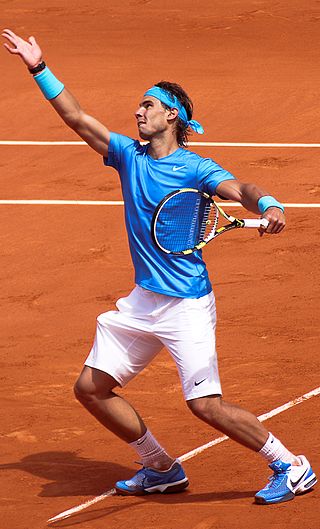
The tennis rivalry between Roger Federer and Rafael Nadal is considered among one of the greatest in the history of the sport. Federer and Nadal played each other 40 times, with Nadal leading 24–16 overall, including 14–10 in finals.
The Borg–Connors rivalry was a tennis rivalry between Björn Borg and Jimmy Connors. They met 23 times during their careers, and 42 times including invitational and exhibition tournaments. Borg leads 15–8 in their official head-to-head, 8–5 in finals, 5–3 in Grand Slam meetings and they are 2–2 in Grand Slam finals. Connors leads 7–3 and 8–1 in invitational and exhibition matches, respectively.
The Becker–Edberg rivalry was a tennis rivalry between Boris Becker and Stefan Edberg, who met 35 times between 1984 and 1996. Although Becker led their overall head-to-head 25–10 and won all three of their Davis Cup matches, Edberg won three of their four meetings in Grand Slams. Edberg and Becker also reached the championship match of the 1989 World Tour Finals, which Edberg won in four sets.

The Graf–Navratilova rivalry was a tennis rivalry between Steffi Graf and Martina Navratilova, widely regarded as two of the greatest tennis players of all time. They met 18 times during their careers, and their head-to-head is even at 9–9, with Graf having a 4–2 record in major finals but Navratilova having a 5–4 record in overall major matches. They contested three consecutive Wimbledon singles finals. Notably, despite how even their rivalry was, the age difference between Navratilova and Graf is more than 12.5 years.
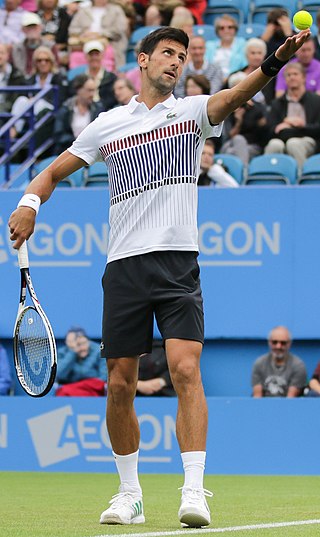
The rivalry between Novak Djokovic and Roger Federer was one of the most prolific rivalries in tennis history and is considered one of the greatest rivalries of all time.
This article covers the period from 1877 to present. Before the beginning of the Open Era in April 1968, only amateurs were allowed to compete in established tennis tournaments, including the four Grand Slam tournaments. Wimbledon, the oldest of the majors, was founded in 1877, followed by the US Open in 1881, the French Open in 1891 and the Australian Open in 1905. Beginning in 1905 and continuing to the present day, all four majors have been played yearly, with the exception of during the two World Wars, 1986 for the Australian Open, and 2020 for Wimbledon. The Australian Open is the first major of the year (January), followed by the French Open (May–June), Wimbledon (June–July) and the US Open (August–September). There was no prize money and players were compensated for travel expenses only. A player who wins all four majors, in singles or as part of a doubles team, in the same calendar year is said to have achieved a "Grand Slam". If the player wins all four consecutively, but not in the same calendar year, it is called a "Non-Calendar Year Grand Slam". Winning all four at some point in a career, even if not consecutively, is referred to as a "Career Grand Slam". Winning the four majors and a gold medal in tennis at the Summer Olympics in the same calendar year has been called a "Golden Slam" since 1988. Winning all four majors plus an Olympic gold at some point in a career, even if not consecutively, is referred to as a "Career Golden Slam". Winning the year-end championship while also having won a Golden Slam is referred to as a "Super Slam". Winning all four majors, an Olympic gold, and the year-end championships at some point in a career, even if not consecutively, is referred to as a "Career Super Slam". Winning the four majors in all three disciplines a player is eligible for–singles, doubles and mixed doubles–is considered winning a "boxed set" of Grand Slam titles.
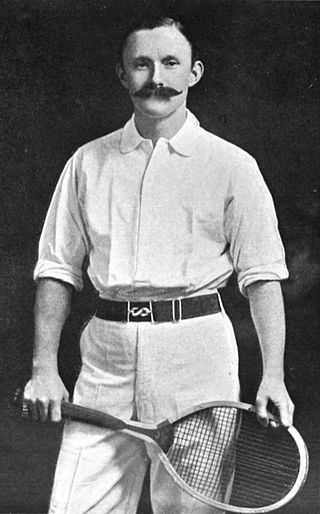
This was a tennis rivalry played between British player Arthur Gore and the New Zealand player Anthony Wilding, which in their respective careers met 14 times from 1905 until 1912.

This was a tennis rivalry played between British player Laurence Doherty and the Irish player Harold Mahony, which in their respective careers met 18 times from 1896 until 1904.
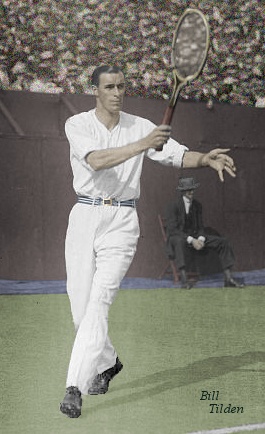
This was a tennis rivalry played between the French player Henri Cochet, and the American player Bill Tilden. In their respective careers the met each other on the court 35 times from 1926 until 1939 it ended with Tilden leading in head to head matches 23-12. In Major championship matches their rivalry ended with Cochet leading Tilden 4-3.
The 1922 World Hard Court Championships (WHCC) was the sixth edition of the World Hard Court Championships tennis tournament, considered as the precursor to the French Open. For the first time, the Championships were not held in Paris, but instead on the clay courts of the Royal Léopold Club in Brussels, Belgium, from 13 until 21 May 1922.
